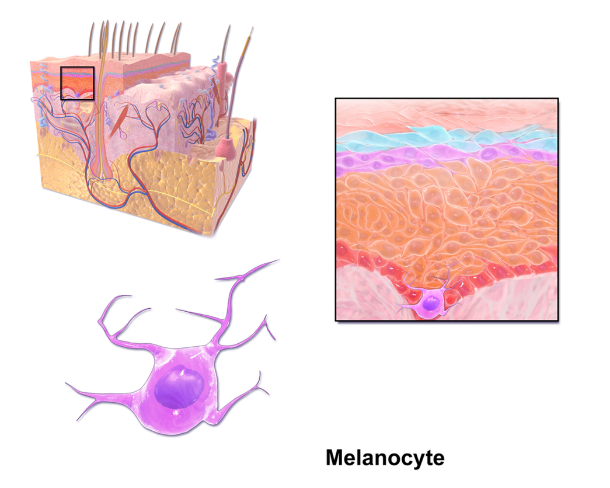Melanin
Melanin is a protein pigment that gives color to skin and hair. It is produced by the melanocytes. Inside the melanocytes are spherical organelles called melanosomes. The melanosomes produce melanin and carry the melanin to keratinocytes in the epidermis. There are 2 types of melanin produced:
- Eumelanin - black/brown pigment color and
- Pheomelanin - provides a red/yellow color.

The number of melanosomes and melanin production is genetic and varies from person to person. The varying amounts and mixtures of the pigments result in the different shades of skin color among humans. A large amount of eumelanin produces dark brown skin color while a large amount of pheomelanin produces red hair and light skin.

This image illustrates the location of a melanocyte and its tentacle shape.

Melanin production is influenced by skin exposure to UV rays. This exposure causes an increased activity in melanocytes to produce more melanin which is subsequently stored in the keratinocytes. Melanin then forms a sort of protective umbrella around the nucleus of the cells. This protects DNA from damage caused by UV rays. Melanin production can block the vitamin D synthesis process while protecting the cell from UV rays.
![]() Check Your Understanding:
Check Your Understanding:
1. People with darker skin color have more skin cells. True or False?
2. Melanin is produced by ____________ which are organelles inside the melanocytes.
